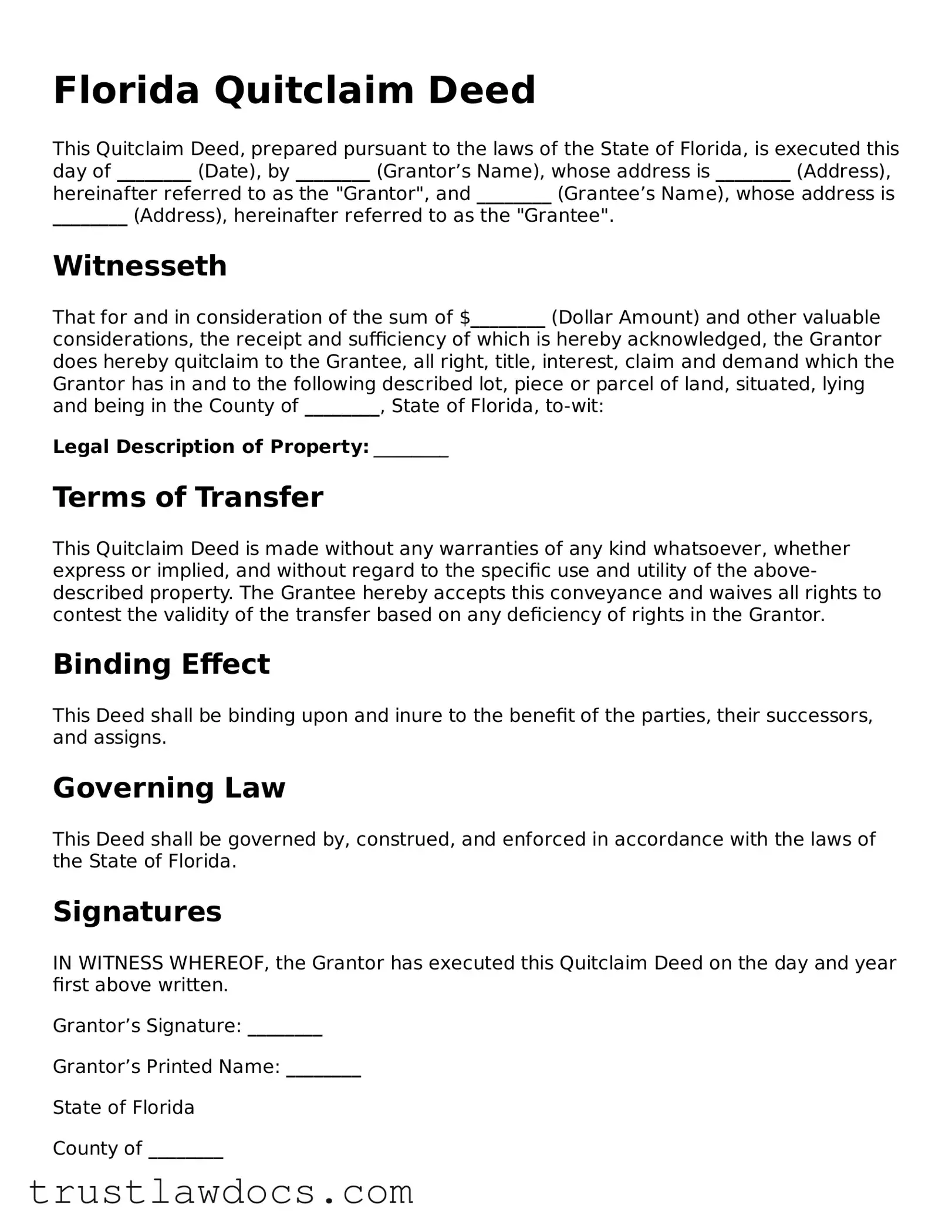Florida Quitclaim Deed
This Quitclaim Deed, prepared pursuant to the laws of the State of Florida, is executed this day of ________ (Date), by ________ (Grantor’s Name), whose address is ________ (Address), hereinafter referred to as the "Grantor", and ________ (Grantee’s Name), whose address is ________ (Address), hereinafter referred to as the "Grantee".
Witnesseth
That for and in consideration of the sum of $________ (Dollar Amount) and other valuable considerations, the receipt and sufficiency of which is hereby acknowledged, the Grantor does hereby quitclaim to the Grantee, all right, title, interest, claim and demand which the Grantor has in and to the following described lot, piece or parcel of land, situated, lying and being in the County of ________, State of Florida, to-wit:
Legal Description of Property: ________
Terms of Transfer
This Quitclaim Deed is made without any warranties of any kind whatsoever, whether express or implied, and without regard to the specific use and utility of the above-described property. The Grantee hereby accepts this conveyance and waives all rights to contest the validity of the transfer based on any deficiency of rights in the Grantor.
Binding Effect
This Deed shall be binding upon and inure to the benefit of the parties, their successors, and assigns.
Governing Law
This Deed shall be governed by, construed, and enforced in accordance with the laws of the State of Florida.
Signatures
IN WITNESS WHEREOF, the Grantor has executed this Quitclaim Deed on the day and year first above written.
Grantor’s Signature: ________
Grantor’s Printed Name: ________
State of Florida
County of ________
On this day, before me, an officer duly authorized in the state and county aforesaid to take acknowledgments, personally appeared ________ (Name of the Grantor), known to me (or satisfactorily proven) to be the person whose name is subscribed to the foregoing instrument, and acknowledged that he/she executed the same for the purposes therein contained.
In witness whereof, I hereunto set my hand and official seal.
Notary Public’s Signature: ________
Notary Public’s Printed Name: ________
My Commission Expires: ________
